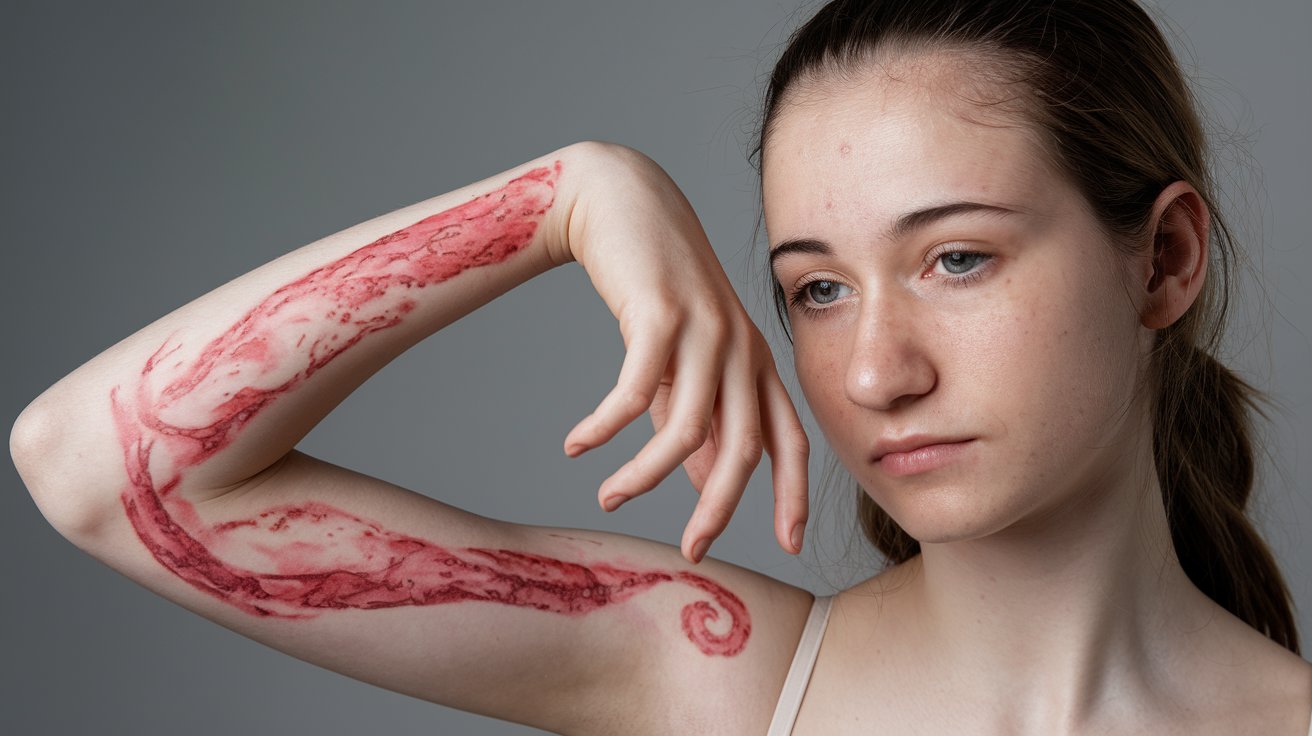
What is Klippel-Trénaunay-Weber Syndrome? Klippel-Trénaunay-Weber Syndrome (KTWS) is a rare congenital disorder. It involves abnormal development of blood vessels, soft tissues, and bones. People with KTWS often have port-wine stains, varicose veins, and limb overgrowth. This condition can affect any part of the body but usually impacts the limbs. Symptoms vary widely, making each case unique. Early diagnosis and treatment can help manage complications. Understanding KTWS is crucial for those affected and their families. This article will provide 25 essential facts about KTWS, shedding light on its causes, symptoms, and treatments. Get ready to learn more about this complex condition.
Key Takeaways:
- Klippel-Trénaunay-Weber Syndrome is a rare condition affecting blood vessels, soft tissues, and bones. It can cause port-wine stains, varicose veins, and overgrowth of bones or tissues.
- Living with KTWS can be challenging, but with support and management, individuals can lead fulfilling lives. Regular healthcare check-ups, emotional support, and adaptive devices are essential for improving quality of life.
What is Klippel-Trénaunay-Weber Syndrome?
Klippel-Trénaunay-Weber Syndrome (KTWS) is a rare congenital disorder. It affects blood vessels, soft tissues, and bones. Here are some intriguing facts about this condition.
-
KTWS is characterized by three main features: port-wine stains, varicose veins, and bone or soft tissue overgrowth.
-
The syndrome was first described by French doctors Maurice Klippel and Paul Trénaunay in 1900.
-
It is also known as Klippel-Trénaunay Syndrome (KTS) or Angio-osteohypertrophy syndrome.
-
KTWS is a sporadic condition, meaning it usually occurs randomly and is not inherited.
-
The exact cause of KTWS is unknown, but it is believed to be related to genetic mutations affecting blood vessel development.
Symptoms and Diagnosis
KTWS presents a variety of symptoms that can vary greatly among individuals. Diagnosing this syndrome involves a combination of clinical evaluation and imaging studies.
-
Port-wine stains are present at birth and are usually the first noticeable sign of KTWS.
-
These stains are caused by an overgrowth of capillaries near the skin's surface, leading to red or purple discoloration.
-
Varicose veins, another hallmark of KTWS, are enlarged, twisted veins that can cause pain and swelling.
-
Overgrowth of bones and soft tissues can lead to one limb being longer or larger than the other.
-
Imaging studies like MRI, CT scans, and Doppler ultrasound are used to assess the extent of vascular and tissue abnormalities.
Complications and Management
Living with KTWS can be challenging due to various complications. Managing the condition requires a multidisciplinary approach.
-
Chronic pain is a common issue for individuals with KTWS, often due to varicose veins and tissue overgrowth.
-
Blood clots, or deep vein thrombosis (DVT), can occur in the affected limbs, posing serious health risks.
-
Lymphatic abnormalities can lead to lymphedema, causing severe swelling in the limbs.
-
Skin infections, such as cellulitis, are more likely due to compromised blood flow and tissue health.
-
Treatment options include compression garments, physical therapy, and in some cases, surgical intervention.
Living with KTWS
Despite the challenges, many individuals with KTWS lead fulfilling lives. Awareness and support are crucial for improving quality of life.
-
Regular follow-ups with a healthcare team are essential for monitoring and managing symptoms.
-
Psychological support can help individuals cope with the emotional and social impacts of the condition.
-
Adaptive devices and modifications can assist with mobility and daily activities.
-
Support groups and online communities provide valuable resources and connections for those affected by KTWS.
-
Research is ongoing to better understand the genetic and molecular basis of KTWS, which may lead to improved treatments in the future.
Interesting Facts
KTWS has some unique aspects that make it a fascinating subject of study.
-
The syndrome can affect any part of the body, but it most commonly impacts the legs.
-
Some individuals with KTWS may develop a condition called "Parkes Weber syndrome," which includes arteriovenous malformations.
-
The prevalence of KTWS is estimated to be 1 in 100,000 live births.
-
The severity of symptoms can vary widely, with some individuals experiencing mild issues and others facing significant challenges.
-
Awareness campaigns and advocacy efforts are helping to increase understanding and support for those living with KTWS.
Final Thoughts on Klippel-Trénaunay-Weber Syndrome
Klippel-Trénaunay-Weber Syndrome (KTWS) is a rare condition that affects blood vessels, soft tissues, and bones. Understanding its complexities can help those affected and their families navigate the challenges it presents. Early diagnosis and treatment are crucial for managing symptoms and improving quality of life. While there's no cure, therapies and interventions can make a significant difference.
Raising awareness about KTWS can lead to better support systems and more research funding. If you or someone you know is dealing with this syndrome, connecting with support groups and medical professionals who specialize in KTWS can provide valuable resources and emotional support. Knowledge is power, and staying informed can help manage this condition more effectively. Remember, you're not alone in this journey.
Frequently Asked Questions
Was this page helpful?
Our commitment to delivering trustworthy and engaging content is at the heart of what we do. Each fact on our site is contributed by real users like you, bringing a wealth of diverse insights and information. To ensure the highest standards of accuracy and reliability, our dedicated editors meticulously review each submission. This process guarantees that the facts we share are not only fascinating but also credible. Trust in our commitment to quality and authenticity as you explore and learn with us.
